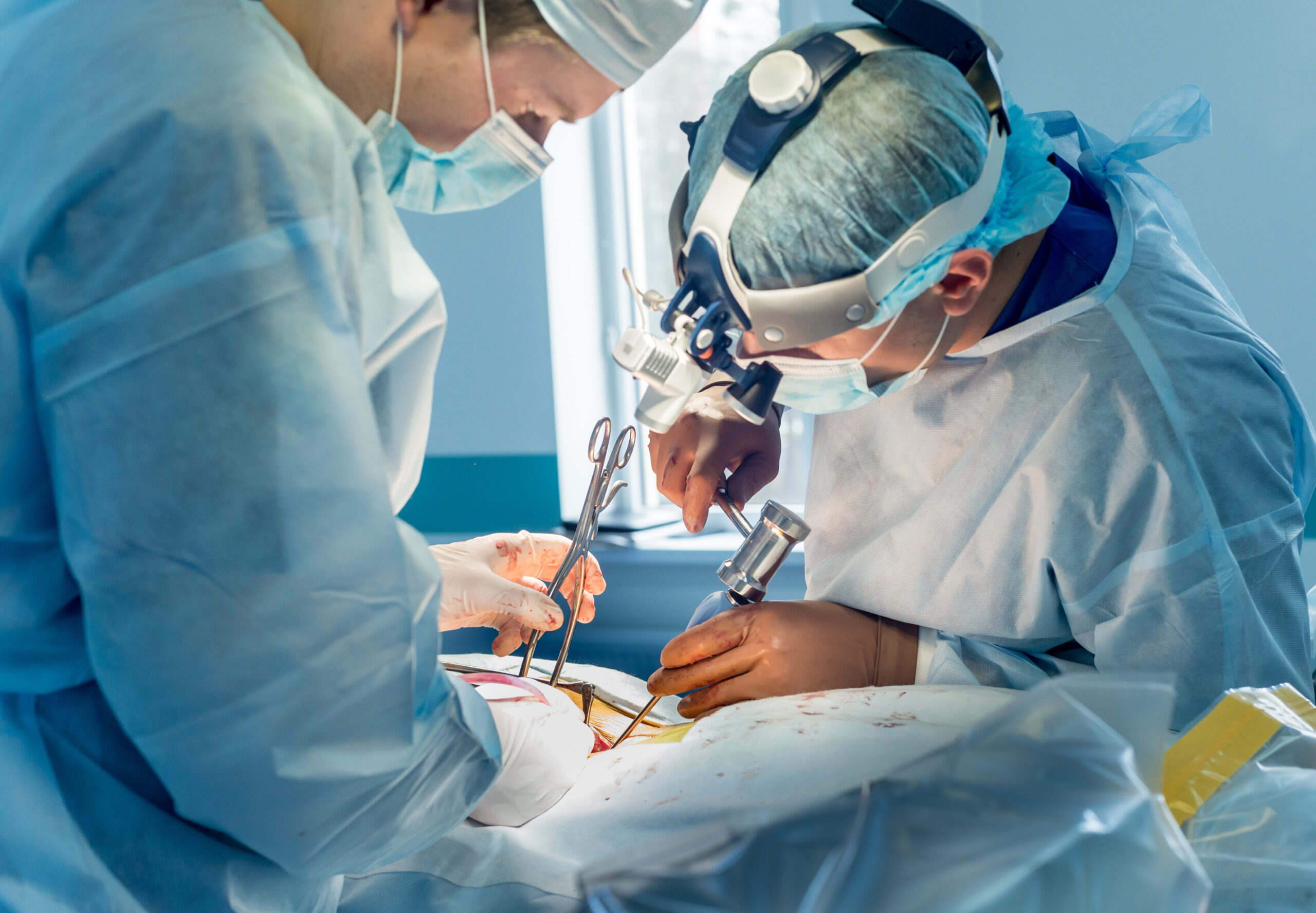
Less is sometimes more when it comes to the implants, plates, screws and staples surgeons place in patients to fix what’s broken or turn back the clock on diseased joints. The minimalist movement in orthopedics is inspiring companies to develop effective solutions that improve patient outcomes and reduce recovery times — key factors as more cases across all segments of the market continue to migrate to outpatient operating rooms.
Farzin Khaghani, CCO of Maxx Orthopedics, said the main considerations associated with traditional knee replacements performed in an ASC setting include space limitations for implant and instrument tray inventory, surgical capacity and sterilization throughput. He pointed out that ASCs must assess the time and cost burden of reprocessing instruments that are needed for each case and the complexity of operating room setups.
“Partnerships with industry can provide value-based services for managing throughput issues,” Khaghani said. “A lot of our focus is on helping ASCs transition knee replacement procedures to their facility.”
Those efforts are seen in the company’s Freedom Knee System, which provides surgeons with simply designed instrumentation and implants that facilitate the restoration of normal joint kinematics.
The system’s Renew unicondylar implant is designed specifically for the outpatient setting. Surgeons can replace only the diseased portion of the knee with minimal bone resurfacing and without impacting the quad muscle and ligaments. “By addressing pathology in a single compartment, the ACL and contralateral compartment are preserved, leading to a quicker recovery and improved proprioception,” Khaghani said. The result is a minimally invasive approach that limits joint trauma, allowing patients to recover faster and in less pain.
“The core philosophy of the Freedom system is rooted in designing implants for patients of various anatomical knee shapes and sizes that offer improved kinematics and the ability to deep bend their knees so they can return to the activities they enjoyed before being limited by pain,” Khaghani said.
The system is being coupled with the latest available technologies, according to Khaghani. “Advanced tools like computer-assisted surgery and personalized instrumentation are being added to the portfolio for improved clinical outcomes,” he said.
At this year’s American Academy of Orthopaedic Surgeons Annual Meeting, Maxx Orthopedics announced a collaboration with THINK Surgical, which will add the Freedom Knee System to its proprietary database of implant modules for use with its TMINI Miniature Robotic System.
Maxx Orthopedics has also introduced Quick Recovery Solutions, a process designed to improve the efficiencies of hip and knee replacements performed in the outpatient setting. The company provides surgeon-specific instrumentation and an implant sized for individual patients in a single tray. Surgical facilities receive only what’s needed for specific cases with just-in-time shipping, eliminating storage burdens that can be difficult to manage.
Inroads in Foot and Ankle
Scott Goldstein, Director of Marketing for Medline UNITE, Medline’s foot and ankle division, said the segment has seen tremendous advancements in minimally invasive approaches in recent years. He added that minimally invasive bunion surgery has a long history, especially in Europe, and it’s gaining momentum in the U.S.
Previous generations of screws weren’t ideally suited for the oblique placements typical in minimally invasive bunion surgery, according to Goldstein, who said this often led to issues like excessive head prominence and damage of soft tissues at the entry point.
“Industry shifted toward developing screws with specialized thread designs and chamfered heads that are tailored specifically for bunion procedures,” Goldstein explained. “This evolution addresses some of the challenges associated with minimally invasive techniques while significantly improving fixation and mitigating soft tissue damage.”
Goldstein said the most widely embraced minimally invasive application in foot and ankle is related to calcaneal osteotomy. “Surgeons often find this procedure more approachable,” he said. “While bunion corrections garner a significant portion of procedure volume, surgeons often say calcaneal osteotomy is the preferred starting point because it’s technically less demanding.”
The adoption of minimally invasive arthroscopic ankle fusion is not as prevalent, according to Goldstein. That doesn’t mean Medline isn’t focused on advancing the procedure. The company recently introduced a traditional ankle fusion plating system alongside implant options that are tailored for a less invasive, mini-open technique.
Interest in minimally invasive foot and ankle surgery is growing but Goldstein said that actual adoption varies depending on surgeon comfort level, with some physicians more interested than others in pushing past the boundaries of the current standard of care. For instance, although minimally invasive approaches for bunions and hammertoes in the forefoot are common, less invasive surgery for fusion of the great toe joint lacks widespread adoption.
“That’s due to technical complexity and challenges,” Goldstein said. “It is difficult to prepare that particular joint for fusion in a minimally invasive fashion in comparison to a traditional open approach that allows for the use of specialized instruments and reamers designed for the anatomy.”
He pointed to a significant amount of discussion and interest surrounding 3D-printed personalized implants and instrumentation that are tailored to individual patients. Specifically, patient-specific instrumentation has found widespread acceptance in total ankle replacement, a procedure that’s far from minimally invasive.
“The utilization of patient-specific implants and instrumentation outside of total ankle replacement is primarily seen in revision scenarios where factors such as changes to anatomy, bone loss or other complexities make off-the-shelf implants unsuitable,” Goldstein said. “However, in terms of volume, these cases represent only a small fraction of overall foot and ankle procedures that truly require personalized solutions.”
Plates and screws make up one of the biggest implant categories in the segment. Goldstein said these devices have historically been utility-based, offering surgeons options that could be applied in various applications such as fusions, fractures and osteotomies. Over the past 10 to 15 years, industry has shifted toward indication-specific and anatomy-specific plates. Medline has been particularly proactive in this regard, focusing on developing options tailored to specific indications and anatomical requirements.
“We’ve moved away from utility options and aimed to offer a comprehensive range of choices for elective reconstructive or traumatic foot and ankle procedures for which plating is necessary or preferred,” Goldstein said. “Previous designs were limited by a lack of variable locking and weren’t easily contoured, but those concerns have been addressed.”
Goldstein noted that bone staples have undergone significant changes in recent years, with advancements in design and technology leading to the adoption of low-profile devices, thanks in part to advanced manufacturing capabilities.
“Staples used to be bent into their final shape in the manufacturing process,” Goldstein said. “Now, modern staples are machined, leading to more refined designs.”
Supporting the Spine
Spinal Simplicy’s Minuteman G5 Implant, an interspinous/interlaminar fusion device that stabilizes and fuses the thoracic, lumbar and sacral spine, is indicated to treat patients with degenerative disc disease, lumbar spinal stenosis and spondylolisthesis. It attaches to the posterior non-cervical spine through bilateral fixation plates and is intended for use with bone graft material placed within the device.
“The implant provides a seven times mechanical advantage over traditional implants in the space, resulting in comprehensive results for pedicle screws and rods across all planes of motion — flexion, extension, axial rotation and lateral bending,” said Todd Moseley, CEO and Co-Founder of Spinal Simplicity. “The device has a large bone graft window. Even our smallest-sized implant can hold more graft material than the largest TLIF cages offered by other spine companies.”
Surgeons place the Minuteman with a lateral approach, using Spinal Simplicity’s patented surgical technique. They insert the device over a guide wire, positioning it above the targeted vertebrae level. Soft tissue dilation creates space without the need to cut muscle and leaves the supraspinous ligament intact — a feature that’s unique for a posterior implant.
The implant is pre-loaded with bone graft material and threaded across the space before its wings are deployed on the contralateral side to secure the device in place. The procedure involves three incisions, each less than one inch, resulting in minimal muscle cutting and limited blood loss.
Minuteman is FDA cleared as a standalone device, distinguishing it from the competition. Spinal Simplicity has also obtained a conditional 510(k) clearance, aligning the device with CPT code 22612 for posterior fusion. “These clearances demonstrate the versatility and effectiveness of the device in addressing various spinal conditions,” Moseley said.
Moseley said the Minuteman’s clinical trial was established with comprehensive inclusion and exclusion criteria. It included subjects with diverse medical backgrounds — smokers, cancer patients, diabetics and those undergoing revision surgery — who are typically excluded from fusion studies.
The graft material used in the study ranged from $85 to $150, significantly lower than the cost of the material in competitors’ products, according to Moseley. He said the study demonstrated a 93% fusion rate and that fusion becomes predictable within four to six months.
Spinal Simplicity is currently conducting a study to assess the implant’s impact on spine stability. A sensor device is being used to measure patients’ balance and gait before and after device implantation. “By objectively measuring factors like pelvic tilt, we aim to enhance patient safety and reduce healthcare costs associated with patient falls,” Moseley said.
Pre- and postoperative MRI assessments take the guesswork out of the device’s effectiveness, Moseley noted. “This enables us to quantify changes in parameters like disc space and lordosis angle, ensuring transparency and bolstering confidence in our outcomes,” he said.
Spinal Simplicity launched a disposable set of instruments for Minuteman late last year. “Those were particularly well received, considering most of the cases involving the device are performed in ASCs,” Moseley said. “Adding disposable instruments to a sterile-packed implant is a huge benefit to those facilities.”
The company’s Edge device received FDA clearance in 2023 and will undergo a soft launch this year. It attaches to the posterior arch at C1. Moseley said the standard treatment of odontoid fractures involves placing lateral mast screws starting at C1. However, he added, few surgeons want to employ that technique and opt to put patients in the halo device to stabilize the fracture.
“Our product offers a solution by securely attaching to the posterior arch, providing a safe and accessible alternative for stabilizing the fracture,” Moseley said. “This innovation is poised to increase the number of patients receiving surgery from one in ten to seven in ten.”
Spinal Simplicity’s Liberty SI Fusion System received FDA clearance last December. It provides true compression across the sacroiliac (SI) joint, a crucial element often overlooked in existing solutions, according to Moseley. “The device ensures proper stabilization, graft integration and joint compression,” he said. “Its deployable mechanism maintains compression over time, offering a reliable solution for improved patient outcomes.”
Like the Minuteman, the Liberty device is placed through a half-inch incision. “Surgeons have reported remarkably low blood loss, about 2ccs to 3ccs, which is negligible,” Moseley said. “Unlike other methods that require crossing the joint line to achieve stability, our approach only extends 10 millimeters across the line.”
The Liberty device integrates graft material directly into the implant to enhance fusion.
After threading the instrument across the joint, a 20mm wing that is 2.25mm thick is deployed against a cortical bone in the SI joint. The Liberty device is positioned above S1, ensuring a safe trajectory for the construct. It allows for the fusion of the SI joint through a less than half-inch incision during a fast and efficient procedure, Moseley said.
A constant quest for advancing patient care has been guiding Spinal Simplicity’s product development efforts. “We don’t want to copy somebody’s product,” Moseley said. “We want to find a way to innovate.”
That mindset can serve as a blueprint for orthopedic companies that understand smaller surgery is paying big dividends.
DC
Dan Cook is a Senior Editor at ORTHOWORLD. He develops content focused on important industry trends, top thought leaders and innovative technologies.




